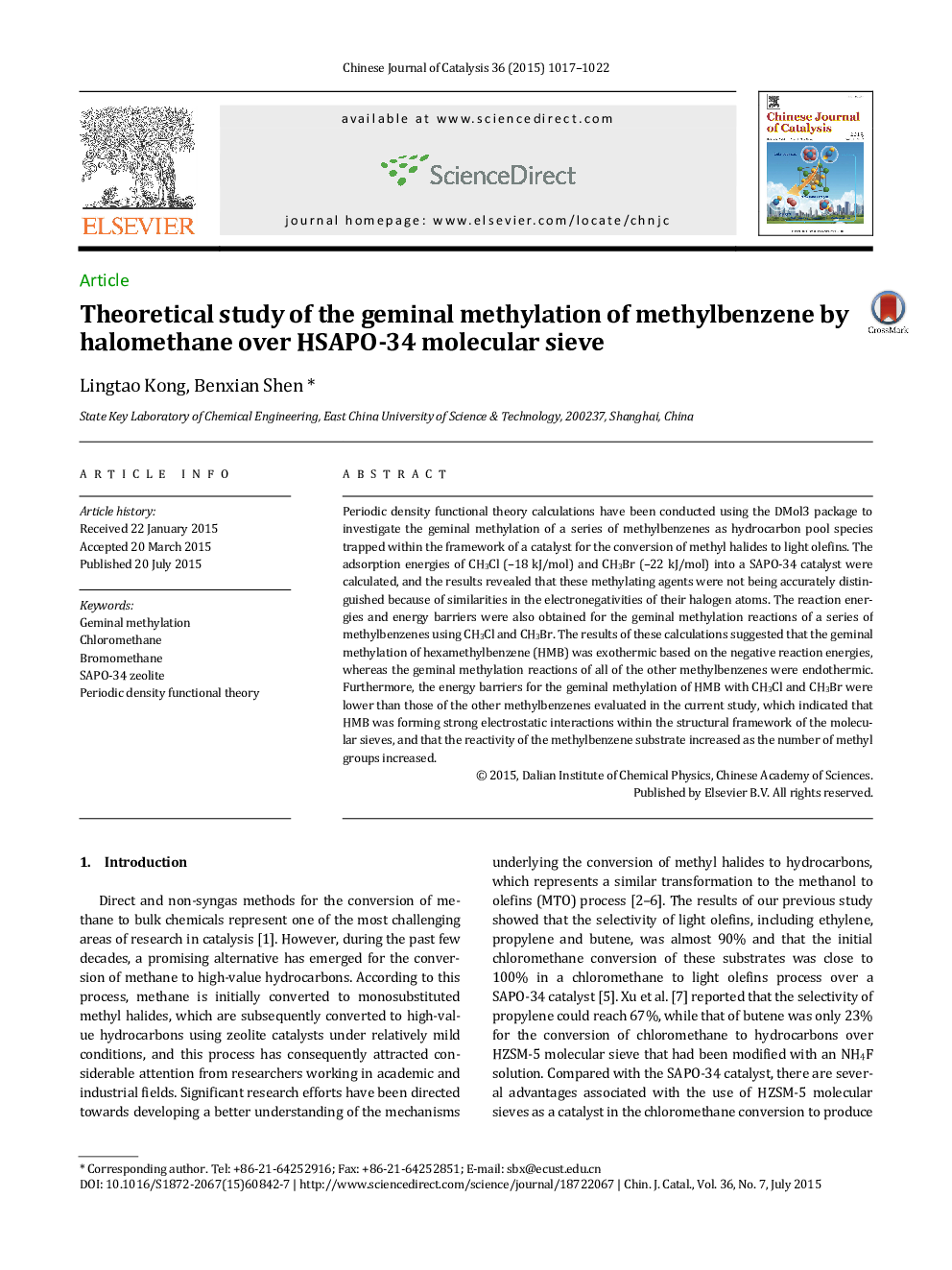| Article ID | Journal | Published Year | Pages | File Type |
|---|---|---|---|---|
| 58950 | Chinese Journal of Catalysis | 2015 | 6 Pages |
Periodic density functional theory calculations have been conducted using the DMol3 package to investigate the geminal methylation of a series of methylbenzenes as hydrocarbon pool species trapped within the framework of a catalyst for the conversion of methyl halides to light olefins. The adsorption energies of CH3Cl (–18 kJ/mol) and CH3Br (–22 kJ/mol) into a SAPO-34 catalyst were calculated, and the results revealed that these methylating agents were not being accurately distinguished because of similarities in the electronegativities of their halogen atoms. The reaction energies and energy barriers were also obtained for the geminal methylation reactions of a series of methylbenzenes using CH3Cl and CH3Br. The results of these calculations suggested that the geminal methylation of hexamethylbenzene (HMB) was exothermic based on the negative reaction energies, whereas the geminal methylation reactions of all of the other methylbenzenes were endothermic. Furthermore, the energy barriers for the geminal methylation of HMB with CH3Cl and CH3Br were lower than those of the other methylbenzenes evaluated in the current study, which indicated that HMB was forming strong electrostatic interactions within the structural framework of the molecular sieves, and that the reactivity of the methylbenzene substrate increased as the number of methyl groups increased.
Graphical AbstractThe geminal methylation of different methylbenzenes has been investigated within the framework of a HSAPO-34 catalyst using periodic density functional theory calculations. Hexamethylbenzene showed the lowest energy barriers for its geminal methylation reactions with CH3Cl and CH3Br.Figure optionsDownload full-size imageDownload as PowerPoint slide
